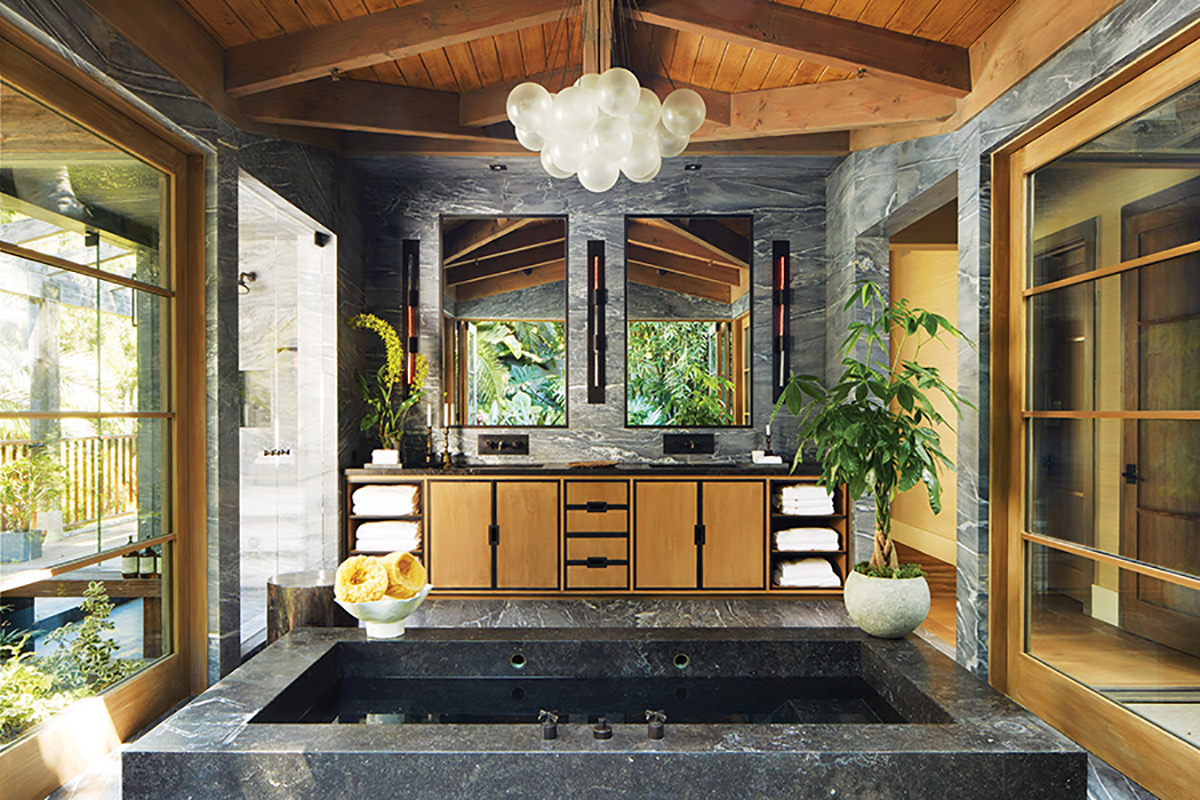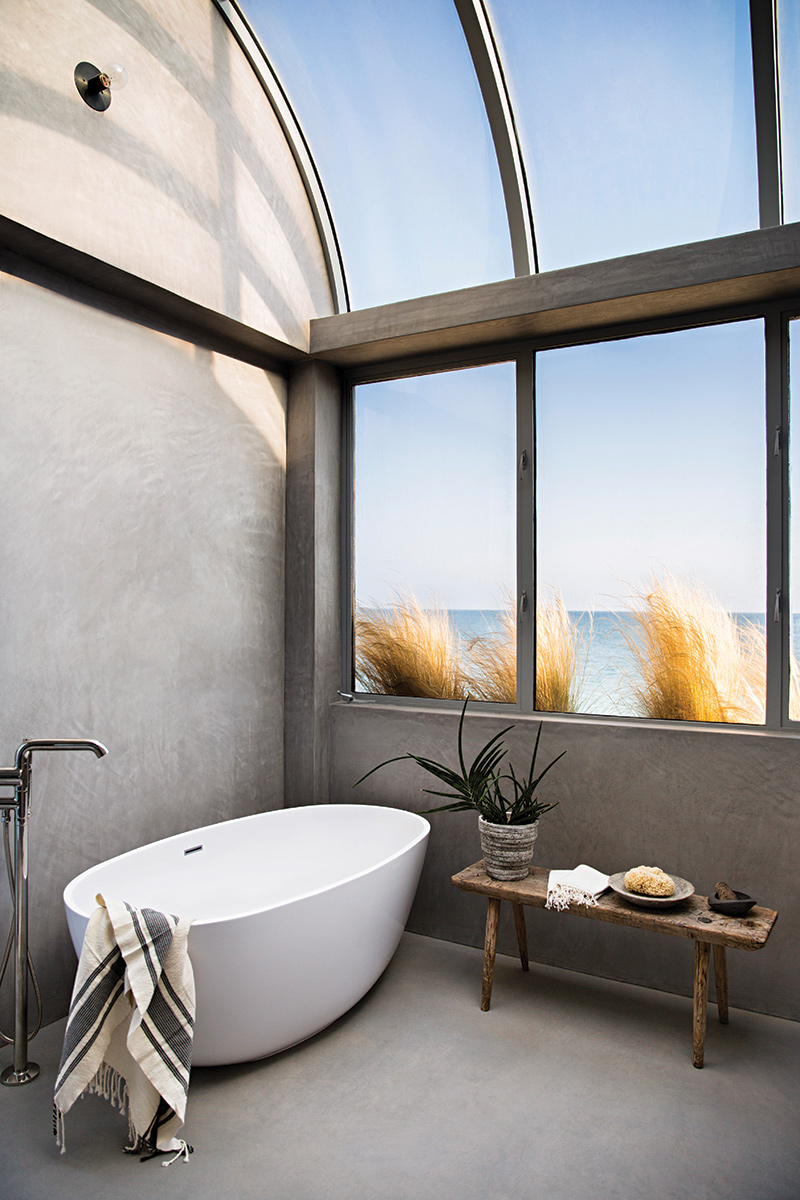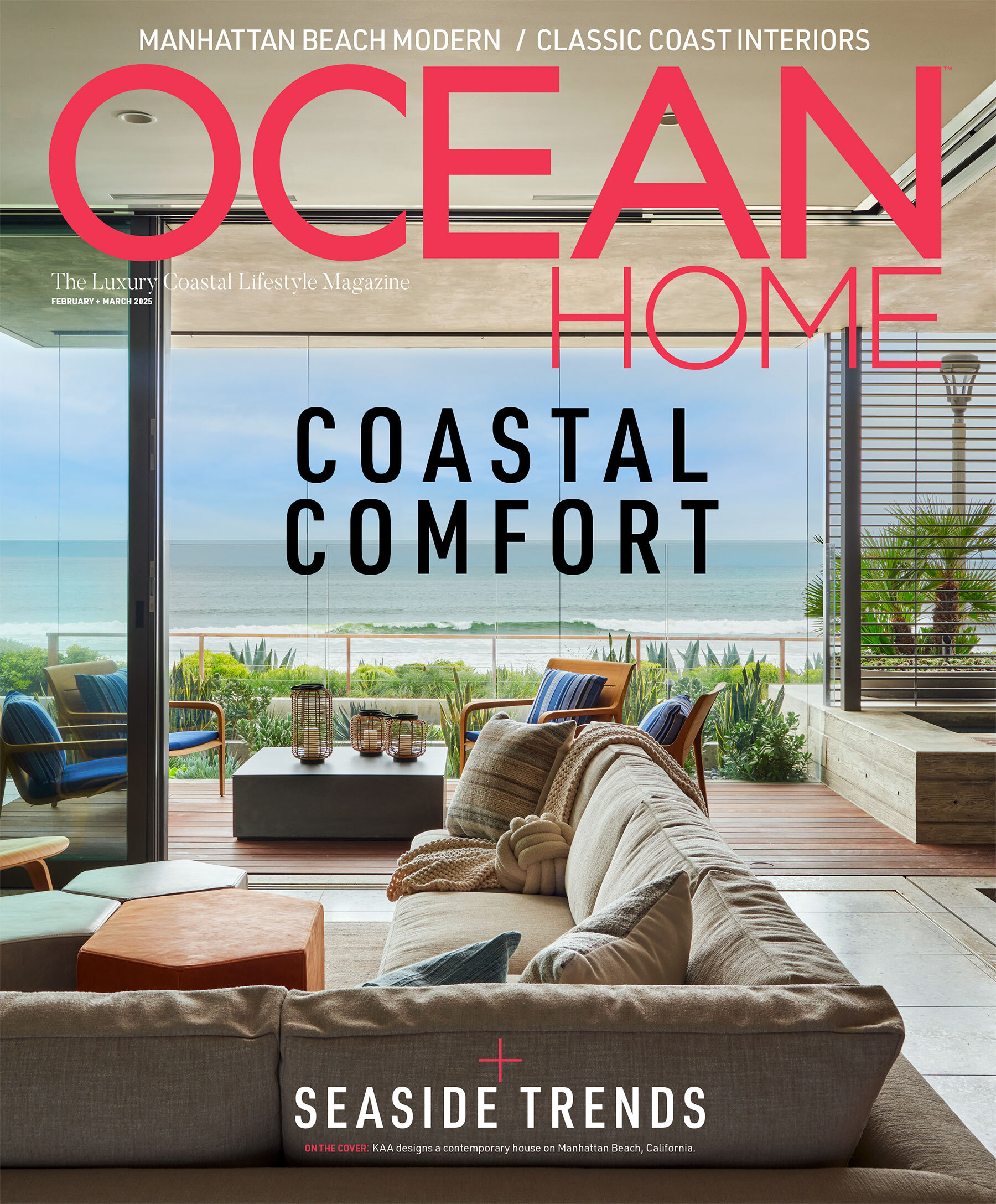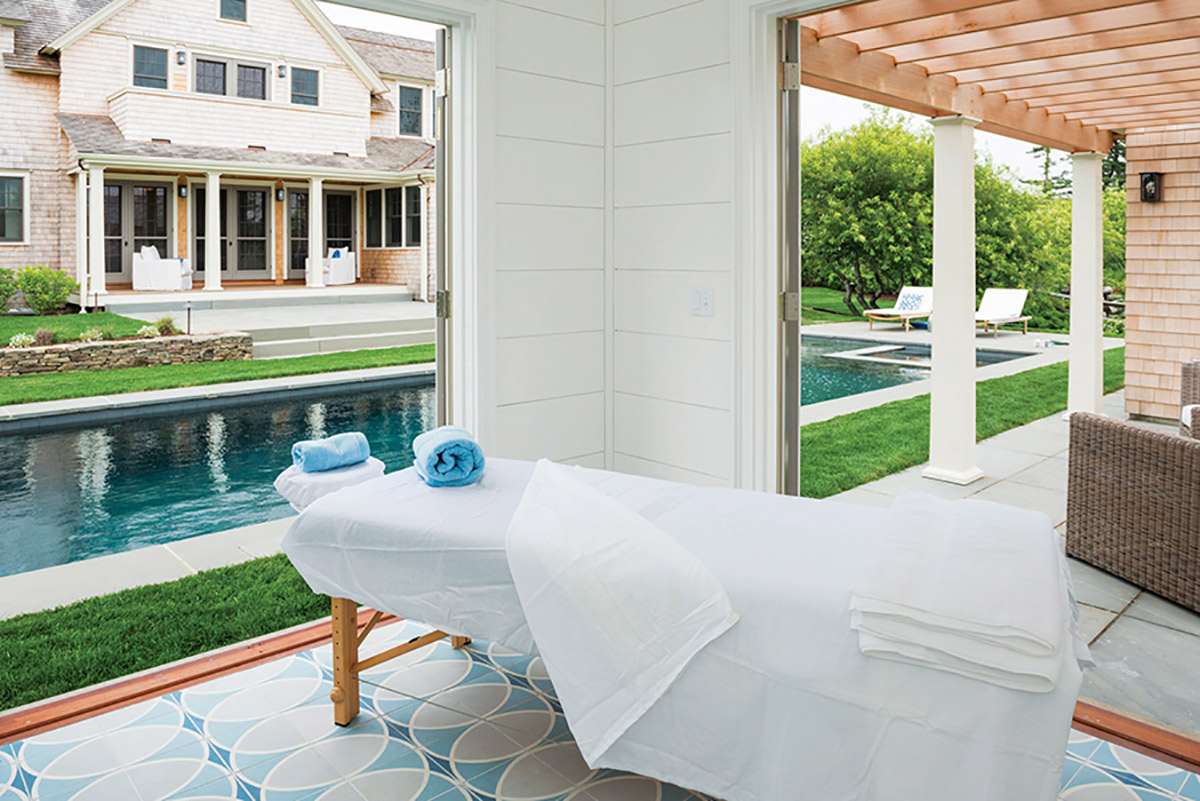With their intoxicating, panoramic views and slip-off-your-shoes atmosphere, waterfront residences are ideal for creating a stunning spa that serves as a luxurious and personal sanctuary.
“With the newest realities and concerns upon us, people don’t want to leave the house to have the ability to do self-care or indulge and escape a bit,” says Vanessa Alexander of Los Angeles–based Alexander Design, adding that the spaces generally have a connection to the outdoors because “people don’t want to feel cheated of views, fresh air, light, and beauty when they are going to the gym or for a treatment.”
Los Angeles-based British designer Martyn Lawrence Bullard agrees that “often a view is an important part of the space and adds to the experience. An indoor/outdoor vibe is preferred, especially where you can hide sliding windows into the walls, making the space a truly floating experience.”
The spa, he adds, has “become requisite” not only in main residences but also in vacation homes, “where it seems the homeowners use these facilities even more.”
Whether it’s a single soaking tub or a state-of-the-art multiple-amenity spa worthy of a five-star resort, many of these amenity-laden spaces in coastal homes are set up in the master suite, and they are promoted as much for their aesthetics as for their health aspects.


“It becomes part of the luxuries within that personal space,” Bullard says, adding that other popular placements include in the pool pavilion and by the family’s home gym.
Architectural designer Matthew MacEachern, founder and principal of the design firm Emeritus, which is based in Nantucket, Massachusetts, has designed numerous spa/gyms that not only take in the views but also blur the lines between indoors and outdoors.
In addition to a triathlon training gym and spa above a garage with a view of the property’s dunes and the Atlantic Ocean, he’s designed a gym that opens to an outdoor patio and has an exterior stair so the personal trainer can enter without walking through the house.
“In the second project, we lined the walls with ivy to soften the outdoor area and integrate the outdoor space,” he says.
On the same property, MacEachern designed a freestanding spa and a separate half-bath structure that are connected by a pergola in the garden.
“We used the space between the two structures to delineate an additional outdoor living area,” he says, adding that “The spa structure was limited to 120 square feet so we integrated as much glazing as possible in the form of French doors.”
Home spas and gyms typically are outfitted with a variety of accoutrements and equipment that reflect the personal tastes of the users.
Bullard notes that for his clients the infrared sauna and the steam room/shower are the “No. 1 requirements” of the home spa. So is a Japanese-style soaking but that one “allows the body to be completely submerged whilst sitting on a stone stool shelf inside it.”


Alexander adds that gyms are less about traditional equipment and more about cutting-edge technology such as smart mirrors that are programmed to serve as personal trainers.
MacEachern, who consults with trainers to select and locate each piece of equipment, says he aims to create spaces that are in sync with the overall concept of the house but that are “slightly less formal and more casual.”
Home spa spaces rev up relaxation with soft, textural fabrics, calming colors and intimate lighting.
Alexander notes that indoor/outdoor fabrics are top choices because of their beauty and durability. To achieve the correct calming-energizing balance, “I like to use tonal/pale/soothing neutrals paired with pale washed-out hits of color,” she says.
She recently created an austere spa featuring a luxurious soaking tub in a master suite whose curving windows overlook the ocean and the landscape. And in a Venice, California, loft with a seaside view, she designed an edgy, industrial spa in a black-and white palette that’s centered around a deep soaking tub.
For MacEachern, “Light is key—if natural light is less available, I tend to implement as many natural materials as possible, including wood and warmer color tones that are certainly more neutral and based in nature.”
Bullard favors white marbles, such as statuario or Calcutta, and with teak wood.
“I like to make the spaces feel very clean and ethereal, hence the use of lots of white marble, especially book-matched slabs on the walls and benches,” he says. “I often believe less is more in a spa, so I like to use the most luxurious materials but in a restrained way, which I believe adds calm and sophistication.”
He recently completed a home spa clad in Arabescato marble that was hand-matched and cut so the veins flow seamlessly around the space. And for a spa attached to a home gym, he chose grey Turkish marble for the steam shower. “It floats within the space,” he says.
Color-therapy lighting and aromatherapy fragrance also enhance the relaxation aspects of the home spa.
“The lighting is mounted into the ceiling and is on a timer system to calm the system and soothe the eyes,” Bullard says, adding that multiple water heads and positions offer the ultimate water therapy showers and steam treatments. “The aromatherapy system slowly filters fragrance from essential oils into the space to create well-being and healthy benefits.”
Regardless of the style of the home spa and the amenities it offers, MacEachern says that every element of the space is selected to “support the overall concept of replenishing one’s mind and body.”
For more information, visit: alexanderdb.com | emeritusltd.com | martynlawrencebullard.com


